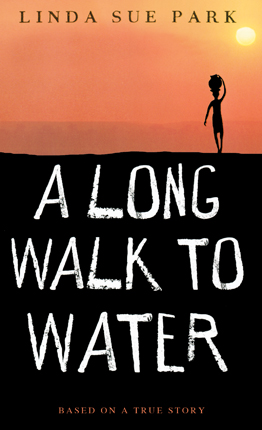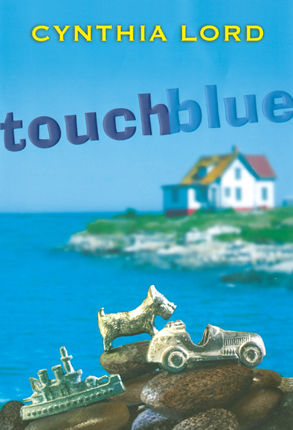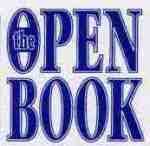
Monday, February 28, 2011
A Long Walk to Water by Linda Sue Park

Sunday, February 20, 2011
Little Golden Books exhibit at the Richmond Children's Museum

Don't miss this unique experience to view the original art from the Little Golden Books!
This exhibition will present the most extensive public showing ever of original illustration art from American publishing’s best loved and most consequential picture-book series, Little Golden Books—the history-making experiment that celebrated its 65th anniversary in 2007.
Launched in 1942—the first full year of America’s involvement in the Second World War—Little Golden Books made high quality illustrated books available at affordable prices for the first time to millions of young children and their parents. Among the artists who contributed to the ambitious series were greats of the European émigré community (including Garth Williams, Feodor Rojankovsky, and Tibor Gergely) who had gathered in New York as the European situation worsened; alumni of the Walt Disney Studios (including Gustaf Tenggren, Martin Provensen, J.P. Miller, and Mary Blair), who came East for the artistic freedom and control associated with picture-book making; and such American originals as Eloise Wilkin, Elizabeth Orton Jones, Richard Scarry, and Hilary Knight.
60 masterpieces of original illustration art by these and other artists—chosen from the vast Random House archive—will be featured in the exhibition, including examples from such picture-book classics as The Poky Little Puppy, Tootle, Home for a Bunny, The Kitten Who Thought He Was a Mouse, The Color Kittens, I Can Fly, and more.
http://www.c-mor.org/events/golden-books
This exhibition was organized by the National Center for Children’s Illustrated Literature, Abilene, Texas.
Wednesday, February 16, 2011
Guys Read! Jon Scieszka at St. Christopher's
![]() How can parents and teachers help boys become
How can parents and teachers help boys become
self-motivated, lifelong readers?
To find out,
join former National Ambassador for Young People’s Literature
Jon Scieszka
for an evening of laughter and learning.
Adults only, please.
Monday, April 4, 2011
Talk and Book Signing 7:00-9:00 pm
St. Christopher’s Lower School Auditorium
699 Pepper Avenue, Richmond, VA 23226
(804) 282-3185, ext. 2380
This Event is Open to the Public. Admission is Free
but reservations are required at http://guysread.eventbrite.com
Donations accepted to support
Read Aloud Virginia and Guys Read
Monday, February 14, 2011
S is for Smithsonian
 S is for Smithsonian: America’s Museum Alphabet. Marie and Roland Smith. Illustrated by Gijsbert van Frankenhuyzen.
S is for Smithsonian: America’s Museum Alphabet. Marie and Roland Smith. Illustrated by Gijsbert van Frankenhuyzen.Sunday, February 13, 2011
V is for von Trapp
V is for von Trapp: A Musical Family Alphabet. William Anderson. Illustrated by Linda Dockey Graves.
2010 marks the 45th anniversary of the Broadway musical, The Sound of Music, which was based on the life of the von Trapp Family Singers. Coinciding with the release of a digitally restored, Blu-Ray limited edition collector’s set of The Sound of Music, William Anderson wrote this book based on interviews with Maria von Trapp shortly before her death in 1987, and with the seven remaining von Trapp children. He also wrote an adult title, The World of the Trapp Family for which he had access to a variety of von Trapp family records and memorabilia.
Thursday, February 10, 2011
Sleeping Bear Discover the World series
The Discover the World series introduces the reader to countries of the world. An interactive website for kids at www.discovertheworldbooks.com supports each book. Free downloadable Teachers Guides are also available to accompany each book.
E is for Eiffel Tower: A France Alphabet. Helen L. Wilbur. Illustrated by Yan Nascimbene.
France is one of the most visited countries in the world. The French language is widely studied by students worldwide. This book celebrates the history and culture of
B is for Bagpipes: A Scotland Alphabet. Eve Begley Kiehm. Illustrated by Alexa Rutherford.
You will find the kilts, the bagpipes, the haggis, and Robert the Bruce, but this book is filled with much, much more. The author and the illustrator, both of whom grew up in Scotland, share their love of their homeland in this extremely beautiful book about history and culture. Both Kiehm and Rutherford are new to the Sleeping Bear stable of artists and writers, but both acquit themselves well and show fine promise.
D is for Down Under: An Australia Alphabet. Devin Scillian. Illustrated by Geoff Cook.
Australia is the world’s smallest continent and the biggest island. Inhabited first by the Aboriginal peoples, it was not until the late 1700s that Australia was colonized by Europeans when England sent unwanted criminals to settle there. The last shipment of convicts arrived in
D is for Dala Horse: A Nordic Countries Alphabet. Kathy-jo Wargin. Illustrated by Renee Graef.
The term Nordic Countries identifies the Nordic region of Northern Europe and North America. It includes the countries
touchblue by Cynthia Lord
 Cynthia Lord’s first novel, Rules, was awarded a Newbery Honor, quite an auspicious beginning for a new children’s writer. touchblue, her second book, proves that Lord is not a one-book wonder. Eleven-year-old Tess lives on an island off the coast of Maine. There are so few children on the island that the state announces plans to close the island school. This action will mean that Tess’s family and others on the island will have to move to the mainland in order to provide an education for their children. The fishermen and their families will be giving up the only life they have ever known. The islanders come up with a plan to take in foster children in order to swell the school population. When thirteen-year-old Aaron is placed with Tess’s family, there are serious adjustments required on both sides, not the least of which is combating Aaron’s suspicion of mixed, self-serving motives among the island families. Lord shows great insight into the minds and hearts of adolescents. Her experience as a Maine island school teacher informs her every word—Wilma Snyder. (Fiction, gr. 4-7; Scholastic, 2010)
Cynthia Lord’s first novel, Rules, was awarded a Newbery Honor, quite an auspicious beginning for a new children’s writer. touchblue, her second book, proves that Lord is not a one-book wonder. Eleven-year-old Tess lives on an island off the coast of Maine. There are so few children on the island that the state announces plans to close the island school. This action will mean that Tess’s family and others on the island will have to move to the mainland in order to provide an education for their children. The fishermen and their families will be giving up the only life they have ever known. The islanders come up with a plan to take in foster children in order to swell the school population. When thirteen-year-old Aaron is placed with Tess’s family, there are serious adjustments required on both sides, not the least of which is combating Aaron’s suspicion of mixed, self-serving motives among the island families. Lord shows great insight into the minds and hearts of adolescents. Her experience as a Maine island school teacher informs her every word—Wilma Snyder. (Fiction, gr. 4-7; Scholastic, 2010)Monday, February 7, 2011
A Family of Readers
A Family of Readers: The Book Lover’s Guide to Children’s and Young Adult Literature. Roger Sutton and Martha V. Parravano, editors of The Horn Book Magazine, write as “book lovers addressing book lovers.” Made up of thoughtful essays, entertaining responses and interviews, A Family of Readers has the look of a college textbook, but its chatty style resembles more that of a magazine. Yes, it defines and discusses the genres of children’s literature; yes, it contains book lists and annotations; yes, it contains an extensive bibliography and a useful index, but this book is much more. Interviews and essays by writers and artists, responses by many who are working in the field of children’s literature, and essays by critics and historians give A Family of Readers strength and depth—Wilma Snyder. (Adult--Children’s Literature History and Criticism; Candlewick, 2010)
Sunday, February 6, 2011
Sugar Changed the World
 Sugar Changed the World: A Story of Magic, Spice, Slavery, Freedom, and Science
Sugar Changed the World: A Story of Magic, Spice, Slavery, Freedom, and Science 